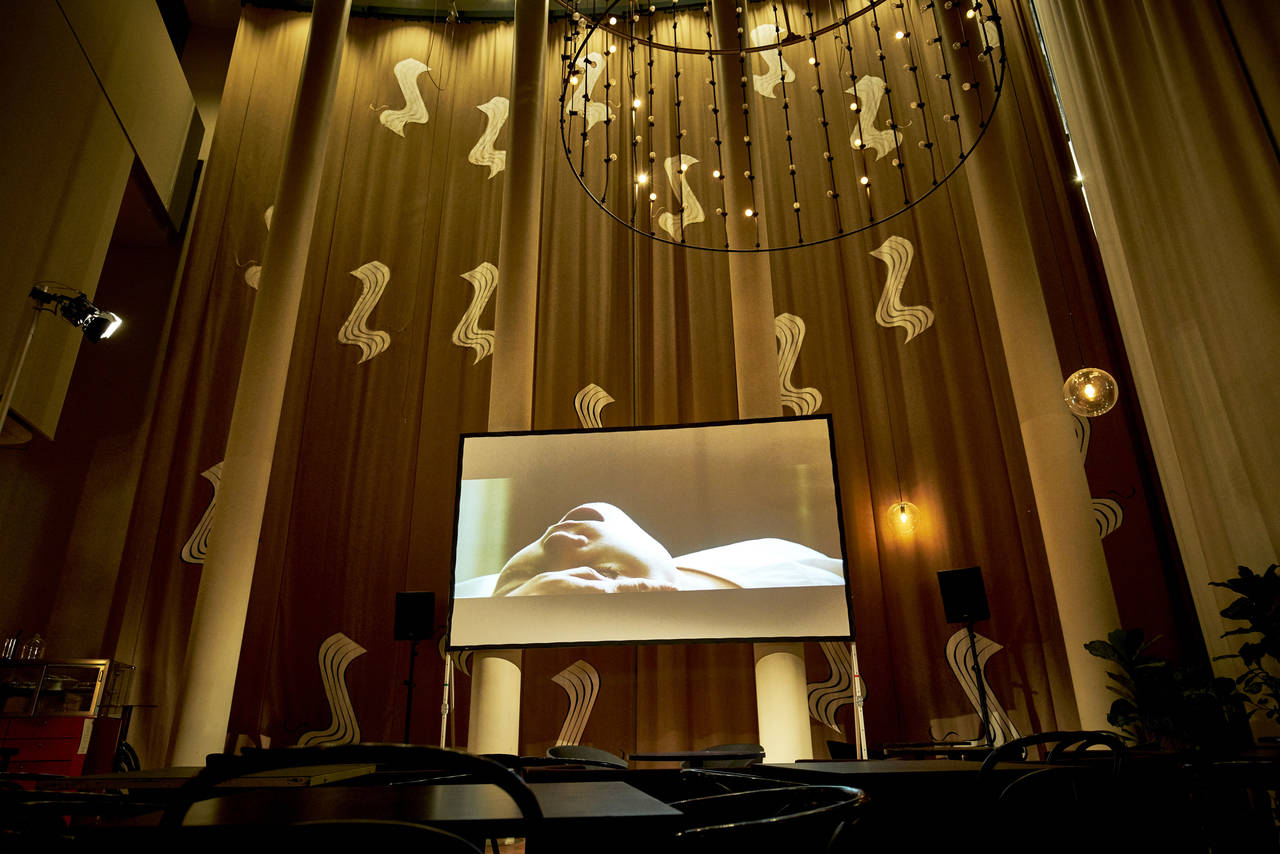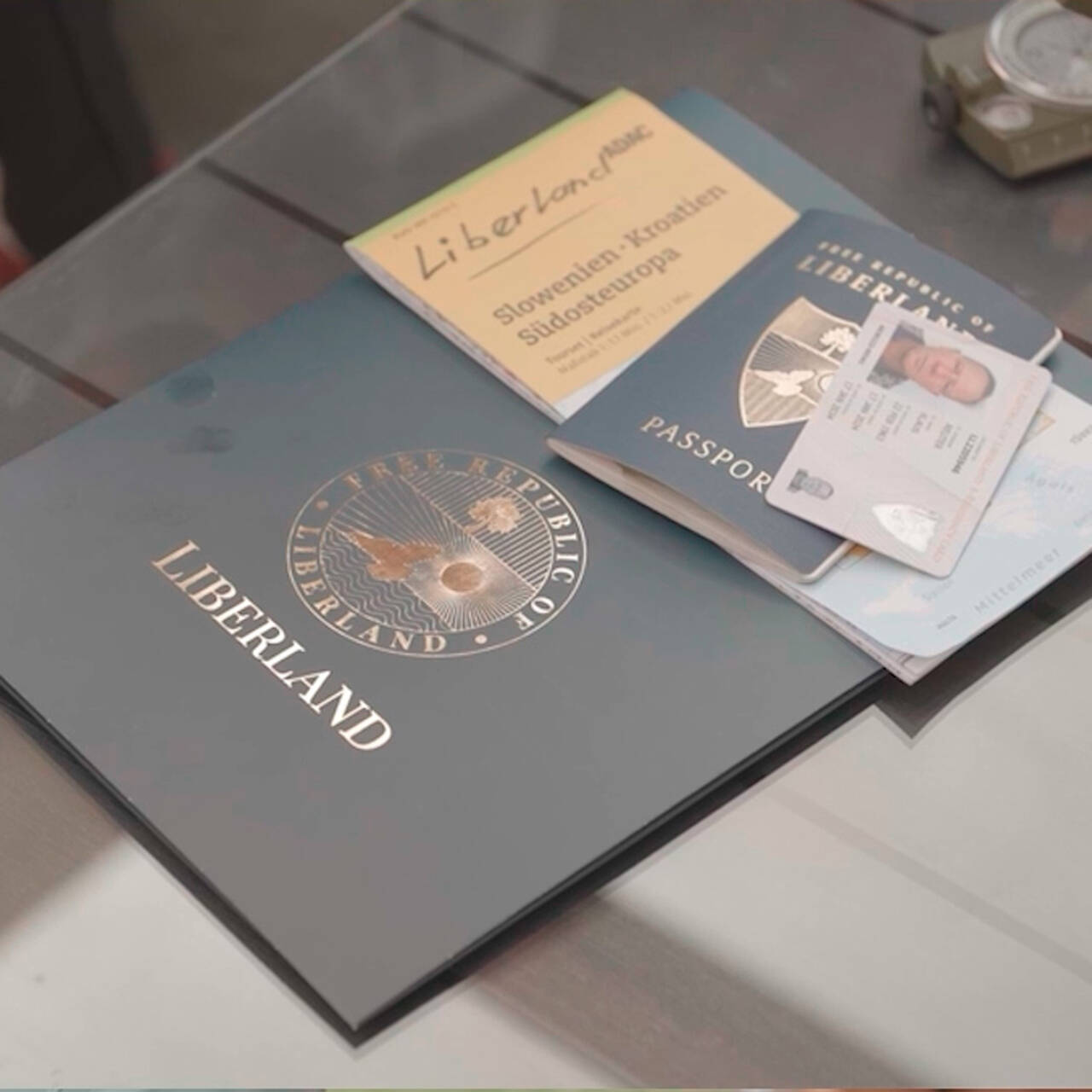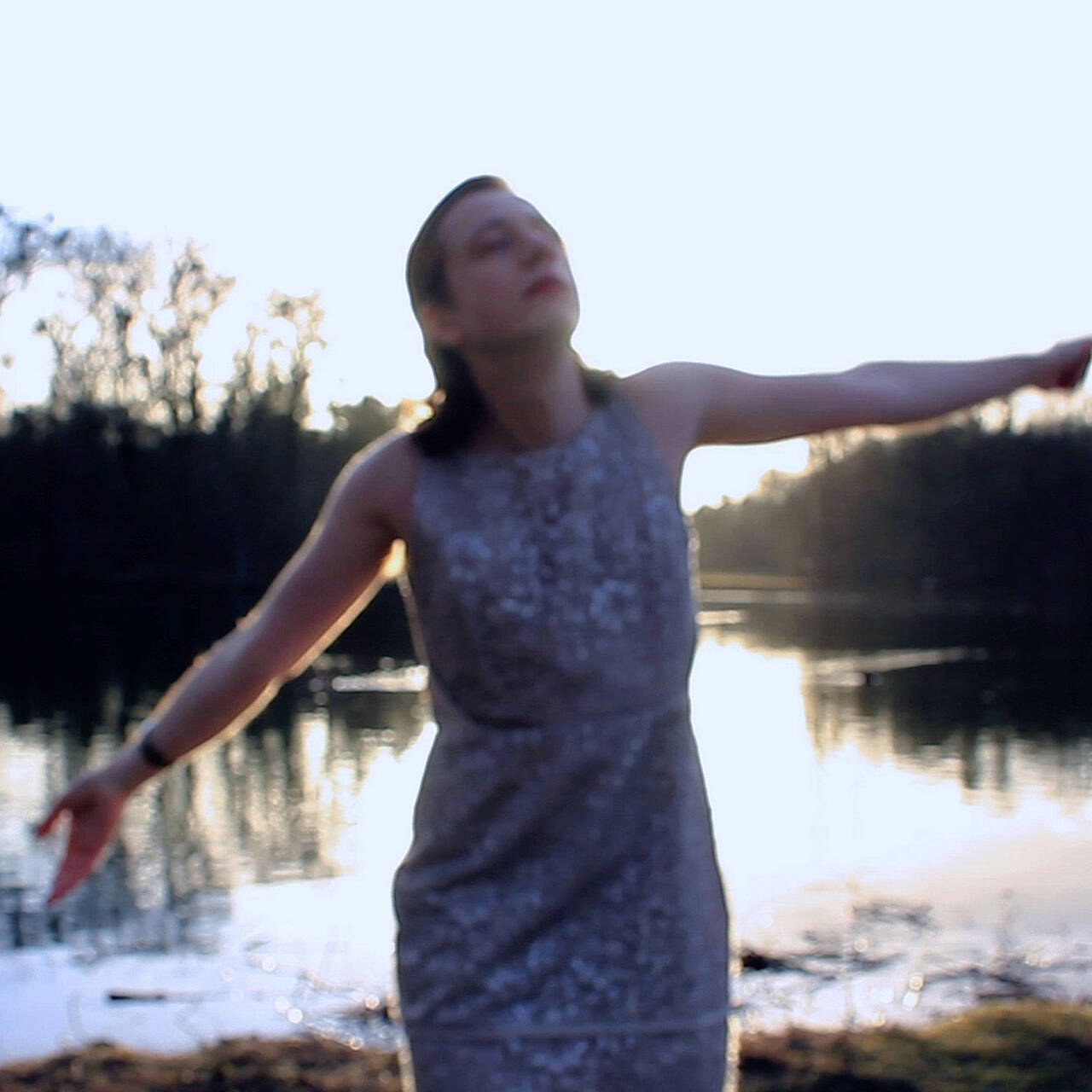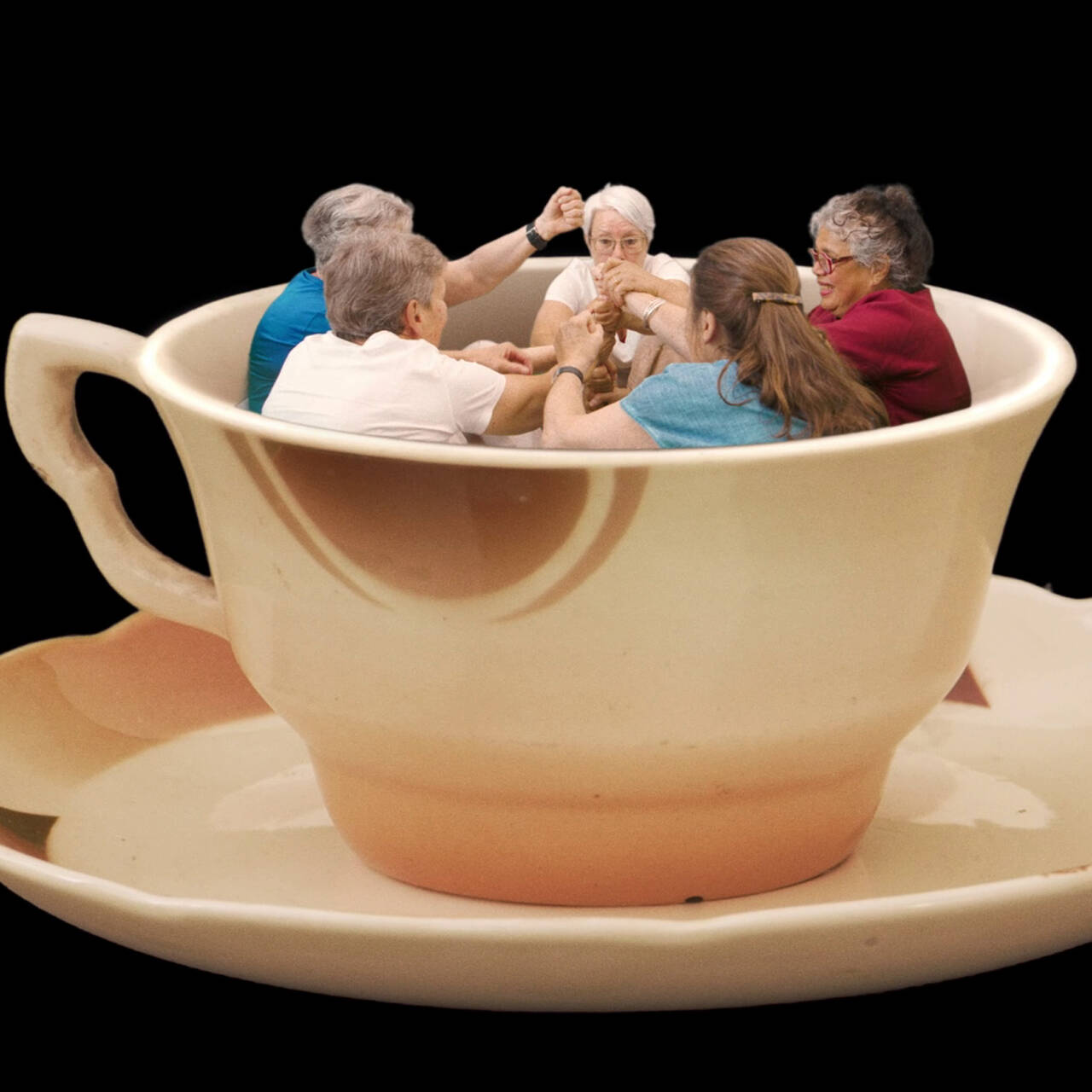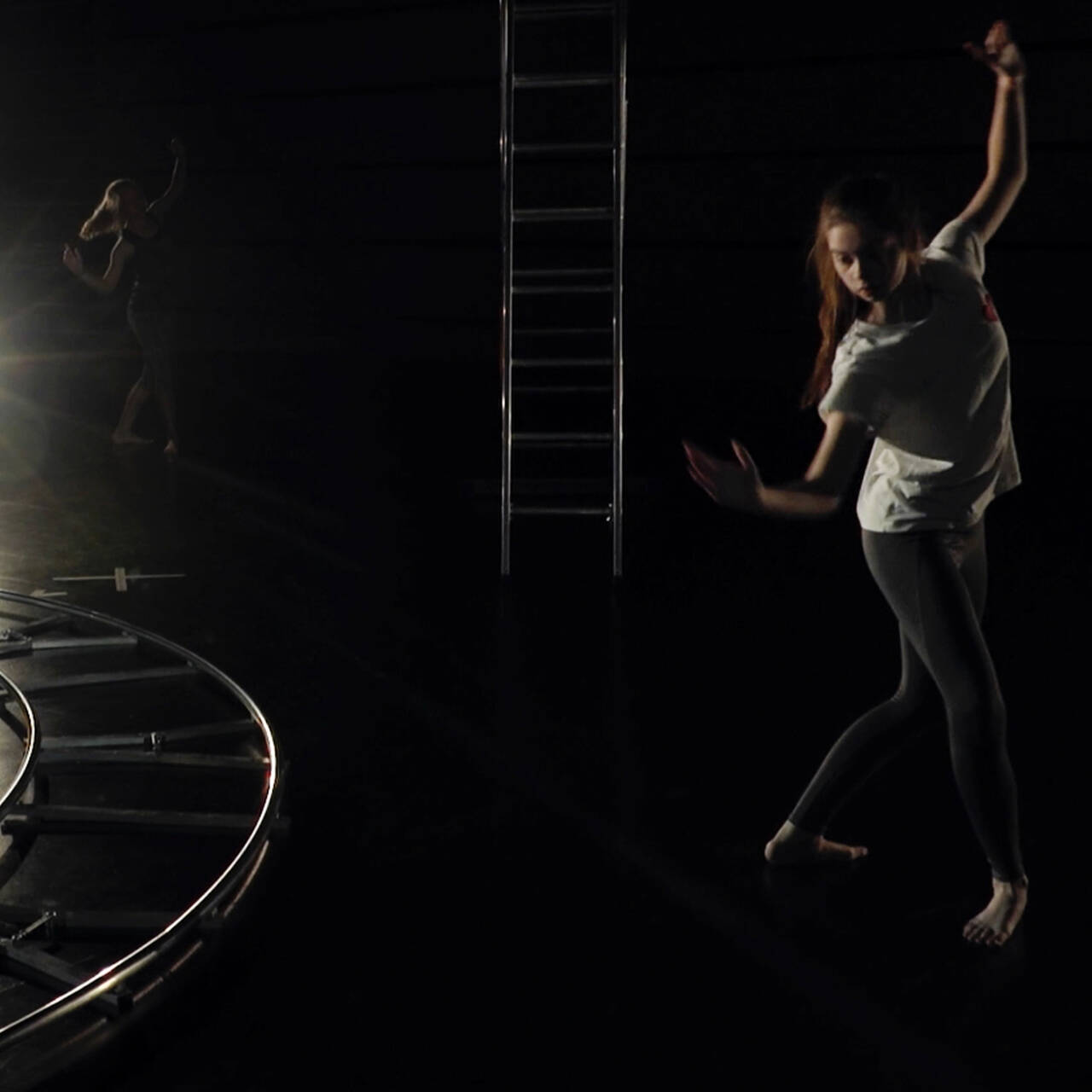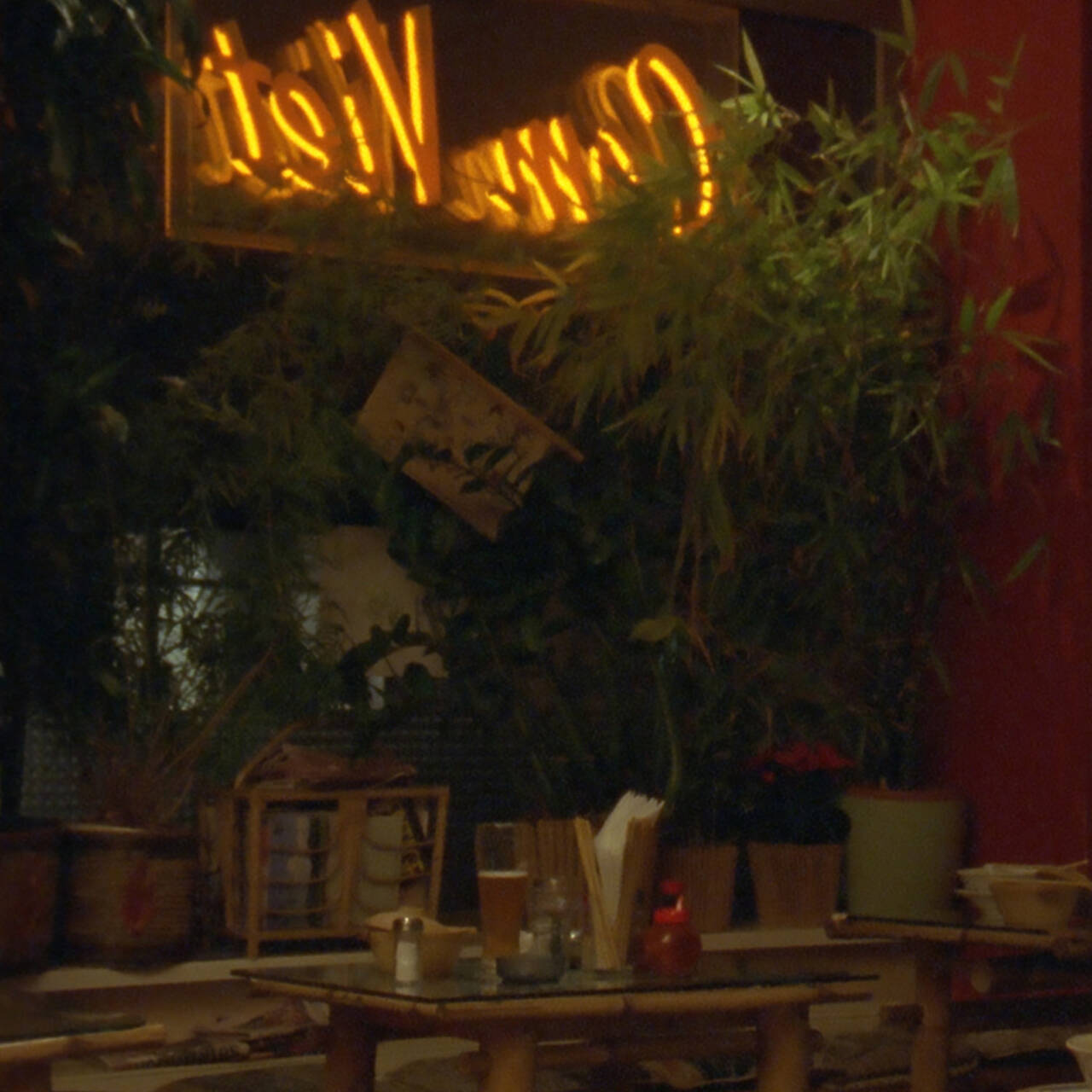What’s a dream and what’s reality? The films of Pauline Curnier Jardin show a disturbing and dystopic world speaking from fear, nightmares and superstition.
There are probably very few who spent their childhood’s long after-school afternoons playing the ancient game of “Nimmgib”. Known as “Teetotum” in English, this is a gambling game in which some kind of collateral – be it paperclips, loose change or whatever is to hand – goes into play with until ultimately one of the players has won the entire haul. The principle of the game is simple: One player turns the teetotum, the six sides of which bear instructions such as “Give two”, “Take one”, “Take all”, or even “Give all”, and the stake is divided up based on how the teetotum falls.
The game lends its title to Pauline Curnier Jardin’s video work from 2017. Here, we likewise see children playing, but the game being played is decidedly peculiar! A child or a young woman whose heavily made-up face makes it hard to guess her age leans against a white picket fence in a circus ground. She wears an outfit reminiscent of the Tin Man and her eyes are closed as if condemned to count to 100 in a game of hide-and-seek. The sole unsettling element is the knife wound at her throat, from which thick, red blood spurts.
Nightmare and reality merge in Jardin's unsettling universe
Meanwhile, we repeatedly see scenes of children in the arena of a circus tent in constant motion as they swing a hula-hoop around their necks, which also immediately starts to leave traces of blood. The only clearly adult character Jardin shows is a middle-aged woman who is trying to relax on a lounger – but does so in vain, as an annoying insect becomes so persistent at times that she unceremoniously attempts to drive it away with a whip. In the meantime, the children’s game takes on ever more disturbing forms.


It’s not only in terms of pictorial language that Pauline Curnier Jardin, born in Marseille in 1980, knows how to evoke unpleasant, almost disturbing feelings in the duration of the barely four minutes of “Teetotum”. The combination of the familiar (sunny weather, the sound of children playing, a gently plucked synthesizer melody) and horror (trash) elements (flickering light, blood) may remind viewers in formal terms of Kenneth Angers or even David Lynch movies which, for their part, put their finger on bleak elements in the everyday and the familiar and use these to unsettle us. “I have this cosmological tendency, I always want to create a universe, a universe that itself has this naive ambition to confound the logic that divides human and nonhuman, rationality and emotion, sacred and profane, ally and enemy, masculine and feminine, showing instead how each is capable of interacting and combining, how each has alternatives, possibilities, and the freedom to do wonderful things“, Jardin explained recently at a screening of her works in Berlin.
I have this cosmological tendency, I always want to create a universe, a universe that itself has this naive ambition to confound the logic […], showing instead how each is capable of interacting and combining, how each has alternatives, possibilities, and the freedom to do wonderful things.
The influences here are wide-ranging, as the artist herself readily confesses: B-movies, folklore, dance, Catholic and pagan rituals, as well as her predecessors in Experimental Cinema.
A catholic procession turns into a pagan spectacle
“Explosion ma Baby” (2016) is another film Jardin is presenting as part of the Double Feature, and resembles an eight-minute state of trance. The fact that the gritty camera image is not direct film manipulation, but actually exposed film material from a Super 8 camera is not immediately obvious. The image is too jittery, and the camera remains too close to the subject to allow viewers a clear overall image. Streamers and confetti fly through the air, paint bombs explode, and we repeatedly see naked children being lifted into the air by adults, while in the background there are images of euro notes hanging on ripcords.

It seems as if we are witnessing a pagan ritual, however the opposite is closer to the truth. In “Explosion ma Baby” Jardin shows the Catholic procession to honor Saint Sebastian, who is worshipped by the faithful as a martyr. The artist spent five years producing footage of the Christian celebration. The shots, which are almost exclusively close-ups, are underpinned by a percussion soundtrack that might make the images appear more like a frenetic party in Goa than a religious festival. This work won Jardin multiple accolades at international film festivals.
A psychologically complex drama in the guise of a horror film
After the screening of her own works, Pauline Curnier Jardin’s favorite film “Celia” (1988) will be shown. Written and directed by Australian filmmaker Ann Turner, the psychologically complex drama is centered around nine-year-old Celia, growing up in a Melbourne suburb in the 1950s. In the middle of the politically heated atmosphere in the post-war era when Communists were being hounded, and during an ever more aggressive plague of rabbits (having been imported from Europe, the animals destroyed entire plant species), a personal drama unfolds: The girl’s beloved grandmother dies. Unable to comprehend the behavior of the adults, particularly her father, Celia finds it increasingly difficult to distinguish between reality and fantasy, and this triggers a fatal chain of events.


Calmly and with the utmost sensitivity, Turner thus shows the perceptual world and everyday life of a girl who makes her own sense of the grueling demands of social reality and behaves accordingly. Since “Celia” was labelled unsuitable for the cinema in North America and therefore went straight to video, it became something of a curiosity in its day: The work, a classic film d’auteur which evades categorization in any particular genre, gained the tagline “Child of Terror” and was henceforth promoted as a horror film. Nevertheless, the “horror” foisted on Turner’s film by its categorization turns out to be a depiction of everyday delusion and not a gruesome spectacle usually associated with the genre.
Reality is in the eye of the beholder
Indeed, it is delusion that is developed in a differently coded way by each individual and which subsequently becomes more subjective and more practiced as part of life: Reality as a construct of one’s own perception. This image, in turn, lends itself to comparison with the teetotum, the spinning top with which the game is played: Depending on the angle, whether it’s the top or bottom side, the teetotum gives an entirely different interpretation, an individual perception, one might say, stemming from the same object of observation.

